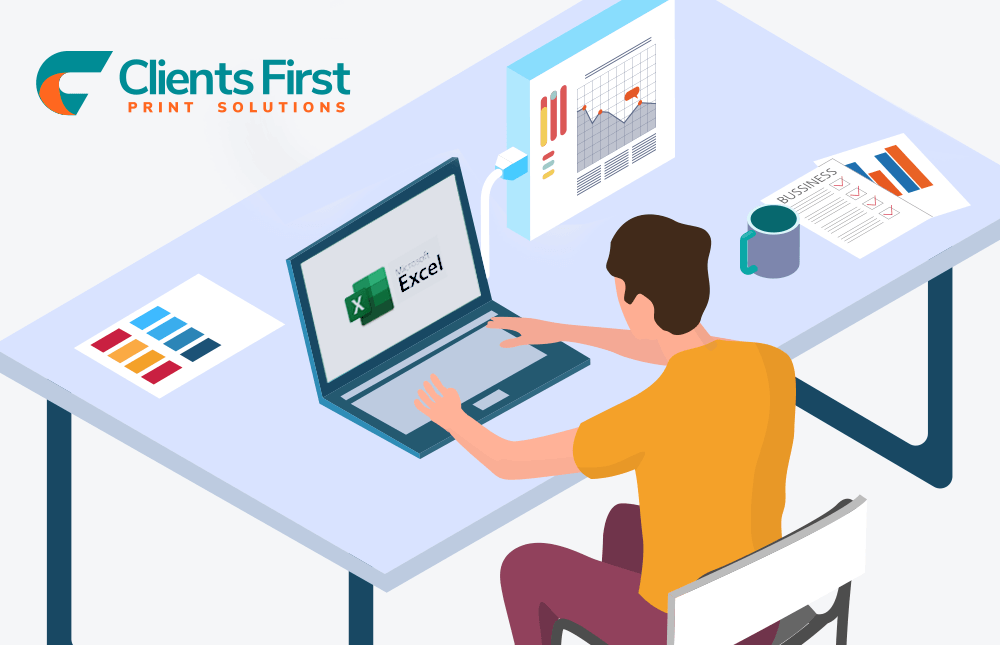Customer satisfaction is of the utmost importance in the printing industry. As a printer, you want to make sure your customers receive the service they ask for in a timely manner, so they return for continued business. But it all boils down to that first interaction: the estimate.
When it comes to creating print estimates, spreadsheets are a common solution for busy estimators. Microsoft Excel has a ton of valuable features and templates capable of managing pricing, quantities, labor, and budgets that they use to compile the most precise estimate.
There is a lot of pressure for an estimator because the company will lose money if they provide an estimate that’s too low, and they might lose the customer if the estimate is too high. Unfortunately, there are limitations to spreadsheets and a high probability of errors when compiling an estimate manually.
Estimates are not only used to organize a print job and allocate resources but, most importantly, to determine a job’s profitability. If you are still using Excel for your print estimates, you may be putting your business at risk unknowingly. Here are the top 6 risks of print estimating in Excel:
- Too Many Potential Errors
There is a general idea out there that Excel can do no wrong. The equations are exact, it does all the math for us, and with just a few clicks, we can have an estimate ready for a printing job. However, Excel is not perfect, and there is significant room for error. Almost 90% of spreadsheets have some error, spreading misinformation to employees, other companies, and clients.
These errors range from one tiny typo in a formula to a copy-paste error. Even though they may seem like minor mistakes, slip-ups that most people make, they can end up costing a company thousands of dollars every year. For example, consider the Canadian company TransAlta. The chief executive, Steve Snyder, admitted that the company had made a simple error in Excel that cost them $24 million.
While your printing company may not have million-dollar contracts at stake, your clients are just as important. You want to ensure that you can provide an accurate estimate the first time around and not surprise them with higher costs later on due to a tiny Excel error. - No Real-Time Visibility
An Excel spreadsheet is a stagnant document with no real-time visibility regarding current jobs and employee availability. You also don’t have much control over versions, which significantly limits what you can do with such a document. If anything changes, such as an emergency job or price change, you can’t immediately see how that affects your pending estimates.
Excel also has no connection to your other printing systems or applications, so your estimators cannot automatically update it as things change in your business. You need to go into the document later and make any updates—but after the fact. - Time-Consuming Manual Processes
One of the biggest downfalls of Excel sheets is that they take time to fill out and format. You need to dedicate your resources to talking with clients, handling production processes, and fulfilling your printing orders. So, all the extra time spent organizing Excel sheets can put you behind schedule.
It can take hours to create the perfect formulas, layout, and formatting in Excel. Even though you can save templates, the very nature of Excel requires you to update the document with every new order manually. Your estimators must manually input the numbers, reformat the sheet for each separate quote, and change the layout to include the most recent calculating factors every time. Plus, numerous versions of the same estimate template can create confusion when looking for the correct estimate. To minimize the number of errors, estimators then have to spend even more time double-checking, or even triple-checking, every document. - Doesn’t Play Well With Other Systems
Think about everything that goes into creating a print estimate. From tracking down material costs and current capacity to looking up equipment utilization and previous estimates from other jobs, it’s a lot of ground to cover. The trouble is that most companies usually store all this essential information required for an estimate in separate systems or applications.
Unfortunately, Excel does not integrate easily with outside systems. You can only input new information manually, copying and pasting from external sources. Not only does this take more time, but it also gives you much more room for error. If you have to go back and forth between systems, taking information from various other systems, documents, or applications can get confusing and extremely time-consuming. The chances of a copy-paste error are pretty high, and you may even confuse communication between estimates and clients. - No Room for Growth
Excel spreadsheets are fantastic for a single person’s budget or for tracking a small family’s spending. However, when used for a growing business’s finances and estimating needs, it can fall short. As a company expands, its expenditures, budget, and estimates become more complex. If you found that Excel spreadsheets worked well for you when your print business was just starting, that may be true. But the more your business flourishes, the more you must track a growing clientele base, numerous current and pending jobs, and many more factors affecting pricing and availability. In short, a simple Excel sheet will no longer work if you want to keep producing timely, accurate estimates every day. The next level up is a financial tool specifically built to handle print estimating, like a print ERP solution. - Data Loss
Since Microsoft 365 includes various downloadable applications, you can only work on an Excel document on the device on which you downloaded the app, regardless of your internet connection. Even though there have been major improvements to Excel in the cloud and multiple people can work on a document from various locations, people are infamous for saving spreadsheets on their personal computer and forgetting to upload the latest version to the cloud. This can be avoided with the right roles and regulations in place, but it still causes a lot of uncertainty and confusion among those involved in estimating
Print ERP: An Alternative to Print Estimating in Excel
The alternative to using Excel is to invest in a print management system that specifically includes print estimating functionality. Unlike Excel, a print ERP solution provides the integrated platform for your critical business functions that you can use to quickly calculate and deliver accurate quotes and estimates. Having all your data in one centralized system means fewer errors and inconsistencies, automated processes, and more opportunities for growth. The days of unclear data and disorganized estimates are over.
An ERP solution like PrintVis gives your estimators back the time they need to focus on their clients and print jobs. Without the worry of potential errors, they can reallocate their energy towards increasing profit margins and expanding your business. Best of all, PrintVis is an affordable, monthly subscription software that presents a very low risk because you can cancel at any time.
If you’re ready to upgrade your existing print estimating process, find out what PrintVis offers. The friendly team at Clients First Print Solutions can help answer any questions you have and walk you through a demo of the print estimating capabilities in PrintVis.



